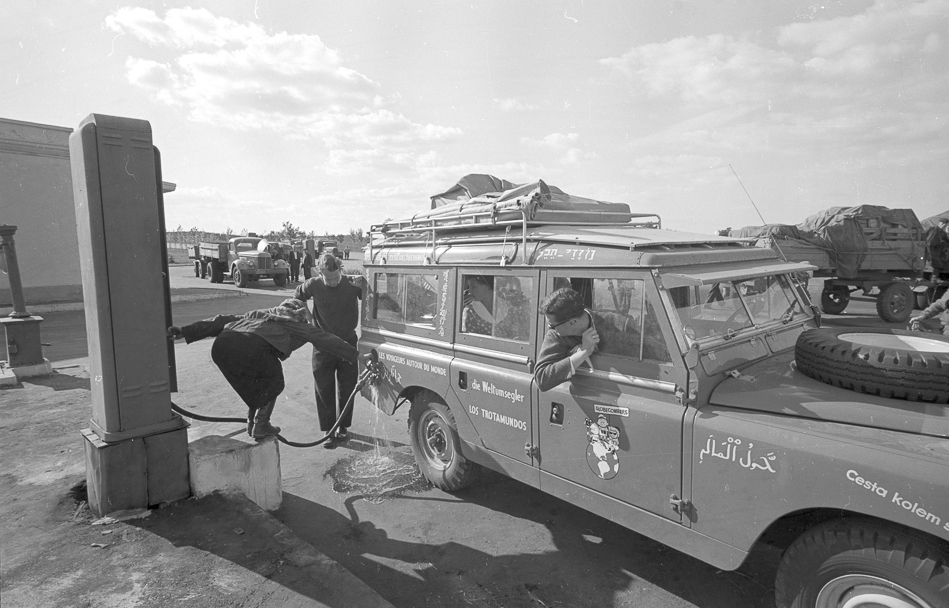Crossing the Iron Curtain
A community-sourced project documenting travels behind the Iron Curtain in 1959 and earlier.

It’s 1959
Alaska is admitted as the 49th U.S. state, the Barbie doll debuts, and the Soviet Union’s Luna 3 probe sends back the first ever photos of the far side of the Moon (a month after Luna 2 crashes into the Moon, and two years after the launch of Sputnik, the world’s first artificial satellite).
Berry Gordy, Jr. founds Motown Records, Columbia Records releases Miles Davis’s groundbreaking album, Kind of Blue, and Walt Disney debuts his 16th animated film, Sleeping Beauty. We lose Buddy Holly, Ritchie Valens, and The Big Bopper when their chartered plane goes down near Clear Lake, Iowa.
The United States recognizes the new Cuban government of Fidel Castro (three days later, the Soviet Union does the same), Soviet leader Nikita Khrushchev meets with Mao Zedong in Beijing, and NASA announces its selection of seven military pilots to become the first U.S. astronauts (later known as the Mercury Seven).
It’s the height of the Cold War, and propaganda, fear, and the possibility of misunderstanding are backdropped by the ever-present threat of a potentially catastrophic nuclear confrontation.
…
In 1959, three young American men, Morton Beebe, John Gewalt, and Michael Briggs, decided to burst forth from these worries and confinements and attempt to crack open the mystery that was the Soviet Union.
Calling themselves the Globecombers, and armed with the charm and boldness of youth, the three friends pooled their resources, purchased a Land Rover in England, and set out to cross the Iron Curtain. The goal: an unprecedented adventure through the cities, towns, and countryside of the former USSR, engaging in friendship and openness with everyone they met.
Crossing the Iron Curtain: An American Adventure is an online multimedia project that sets out to recall those dramatic days when the energy and optimism of youth challenged the fierce national pride of two great nations. Combining interviews and an extensive private photographic archive with the extensive reach of social networking, the project hopes to collect and assemble a broad range of perspectives from participants of that era.
You can participate!
We encourage you to look through the photographs and commentary that appear on the project’s Facebook page (updated regularly), and share your thoughts and impressions. We’re especially interested to hear from you if you recognize someone in the photographs, whether it’s a friend, relative, or even yourself! Please enjoy this walk through our shared history.
